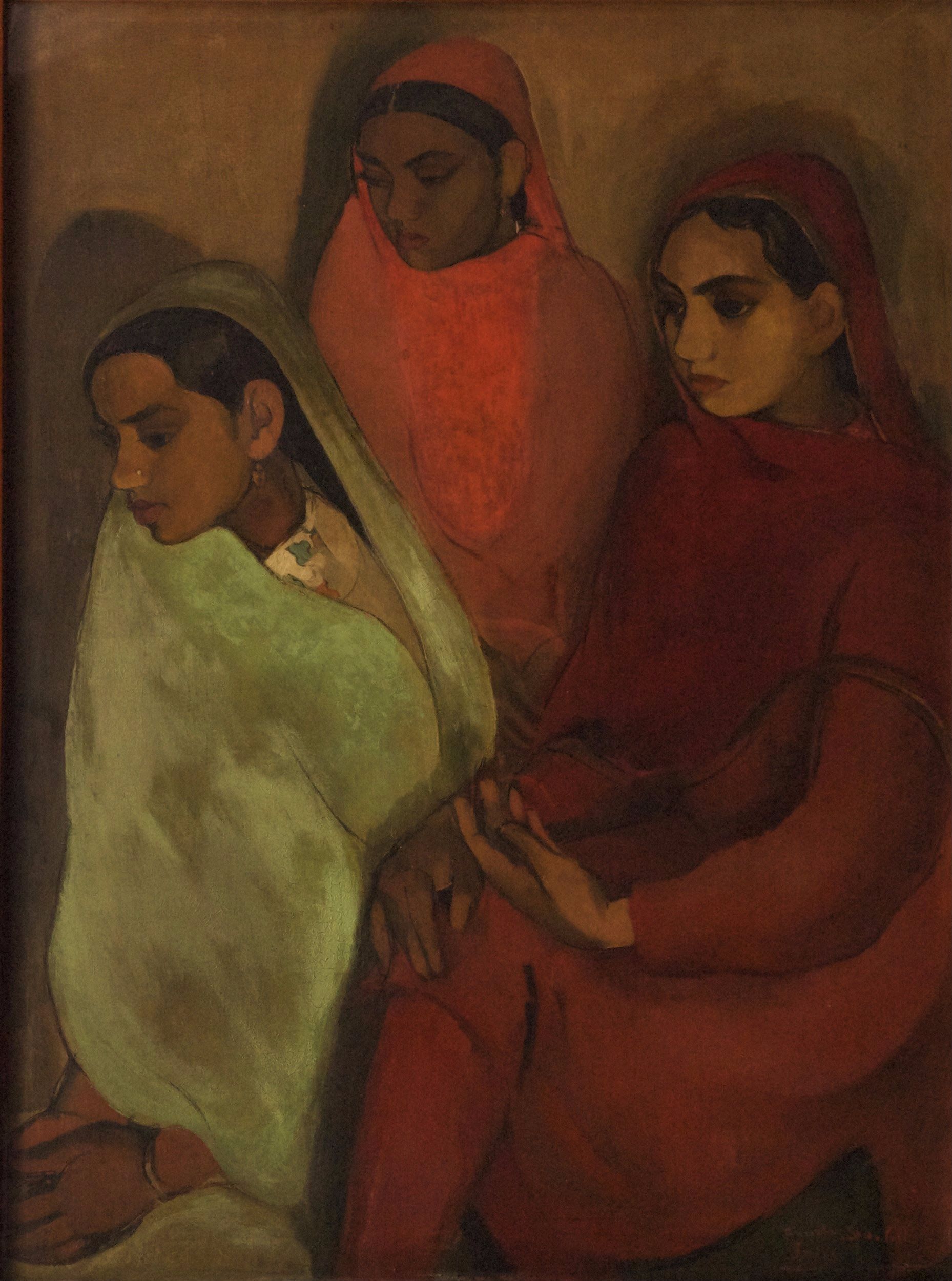Reproducing the struggles and lives of Indians on canvas was Amrita Sher-Gil’s self-proclaimed mission as an artist.
Her art depicts the quiet struggle, submission, and patience of Indian women in the 1920s and 30s. Three Girls depicts Sher-Gil’s cousins, the granddaughters of a wealthy Punjabi politician. The surroundings of the girls are not shown. However, by paying attention to the way the girls hold themselves and their facial expressions we are able to identify their struggle.
Sher-Gil uses primarily dark, warm, earthy colors but offsets them with the bright turquoise worn by the leftmost girl. It creates both a sense of visual intrigue/contrast and symbolizes the hope their lives may amount to something more than subservience.
The girls look down, in deep thought, “contemplating a destiny they could not change.” At the time, many Indian women were forced into an oppressive life, forced to be servants to husbands who they did not choose to marry. Since Sher-Gil’s time, the quality of life for women has improved in India, and in the rest of the world. However, this struggle still persists for many people. Many women are still forced to be servile wives for arranged husbands, and lack the same freedoms and respect of men.
I wrote this analysis of the painting Three Girls by Amrita Sher-Gil for English class for my senior year. I am proud of this work and thought I would post it here.
